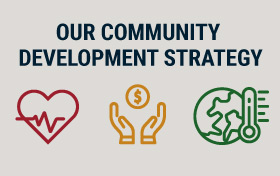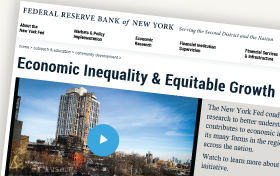Turnover in Fedwire Funds Has Dropped Considerably since the Crisis, but It’s Okay
Funds Service is a large-value payment system, operated by the Federal Reserve Bank of New York, that facilitates more than $3 trillion a day in payments.
Historical Echoes: Federal Reserve Clams
We’ve already talked about clams being used as money as late as 1933, but some genuine clam shells found during the construction of the New York Fed’s building at 33 Liberty Street sparked both geological interest and many witty remarks about “clams” being fossilized under a bank.
The Declining U.S. Reliance on Foreign Investors
The United States has been borrowing from the rest of the world since the mid-1980s.
Just Released: Firms Weigh in on Affordable Care Act in August Business Surveys
The Federal Reserve Bank of New York’s monthly surveys of manufacturers and service-sector firms include special supplementary questions on topics of interest.
Gates, Fees, and Preemptive Runs
In the academic literature on banks, “suspension of convertibility”—that is, preventing the exchange of deposits at par for cash—has traditionally been seen as a potential means of preventing economically damaging bank runs.
Historical Echoes: Caricatures of Financial Leaders in the National Portrait Gallery
Caricatures of Alan Greenspan and Warren Buffett in the National Portrait Gallery?
Just Released: Looking under the Hood of the Subprime Auto Lending Market
Andrew F. Haughwout, Donghoon Lee, Joelle Scally, and Wilbert van der Klaauw Today, the New York Fed released the Quarterly Report on Household Debt and Credit for the second quarter of 2014. Aggregate debt was relatively flat in the second quarter as housing-related debt shrank, held down by sluggish mortgage originations. But non-housing debt balances […]
Why Didn’t Inflation Collapse in the Great Recession?
GDP contracted 4 percent from 2008:Q2 to 2009:Q2, and the unemployment rate peaked at 10 percent in October 2010.
Inflation in the Great Recession and New Keynesian Models
Since the financial crisis of 2007-08 and the Great Recession, many commentators have been baffled by the “missing deflation” in the face of a large and persistent amount of slack in the economy.
Crisis Chronicles: The Hamburg Crisis of 1799 and How Extreme Winter Weather Still Disrupts the Economy
With intermittent war raging across much of Western Europe near the end of the eighteenth century, by about 1795, Hamburg had replaced Amsterdam as an important hub for commodities trade.














 RSS Feed
RSS Feed Follow Liberty Street Economics
Follow Liberty Street Economics